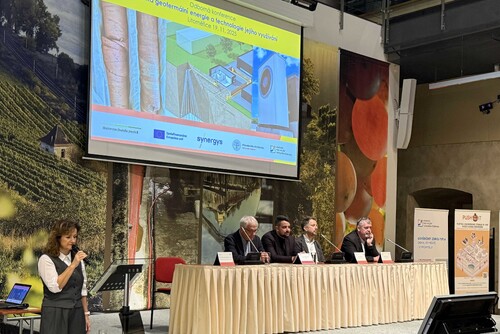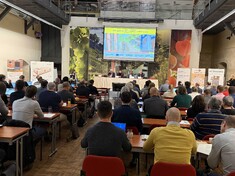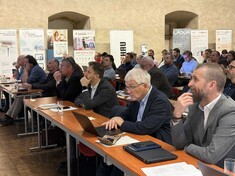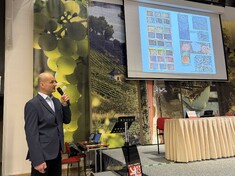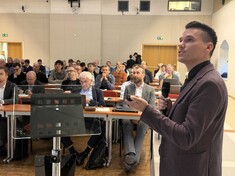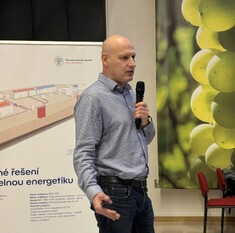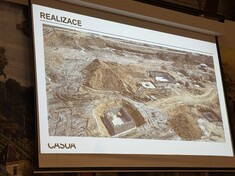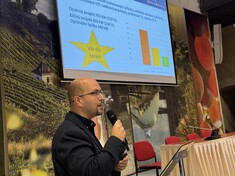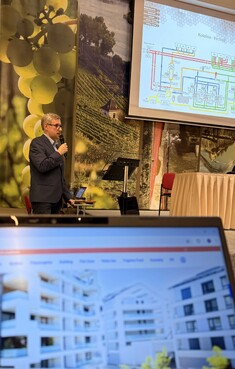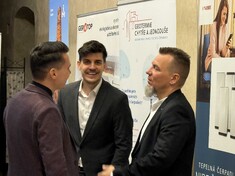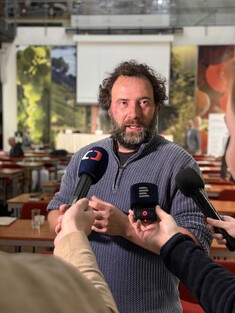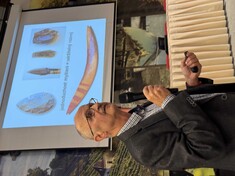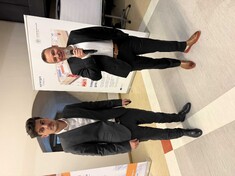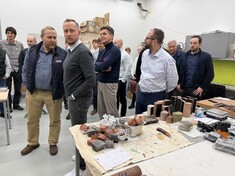“The aim was to connect key stakeholders, present proven as well as new technologies, become familiar with current trends and challenges in shallow geothermal energy, and draw inspiration from successful projects. Judging by the reactions of roughly one hundred participants, this was achieved,” said Tomáš Fischer from the Faculty of Science of Charles University, principal investigator of the SYNERGYS project, whose mission is to develop conditions for the development and application of new clean energy sources and their underground storage.
“Geothermal energy is not an alternative; it is a stable resource. It meets EU requirements and helps developers move towards a time when they will no longer be allowed to use fossil fuels. And that time is approaching,” pointed out Pavel Král, Technical Director of Trigema Development. There was unanimous agreement that this only widely available domestic source of thermal energy must, through joint efforts, be incorporated into the energy mix to a much greater extent. Science is precisely what should help developers use geothermal energy safely and efficiently and test new approaches that can subsequently be applied in practice. Developers are already able to cope with complex conditions, for example in the historic centre of Prague. However, there are many more challenges, especially technological ones. One of them is, for example, the protection of groundwater during drilling works and the subsequent capture of the earth’s energy, which in turn falls within the remit of public administration.
“Data from the ongoing research of the bedrock are also needed by representatives of towns and municipalities and by water authorities so that they have high-quality and reliable information available that is necessary for permitting these energy sources,” noted Pavel Gryndler, Head of the Environment Department of the Litoměřice Municipal Authority.
After the conference, around sixty representatives of the professional community went on to visit the RINGEN science and research centre in the former Jiří z Poděbrad barracks, where, among other things, common topics for further cooperation were discussed. Geologist Vít Peřestý of the Czech Geological Survey presented the current results of the ongoing drilling works in Litoměřice. He also highlighted cooperation with researchers in Germany and the Netherlands who are involved in joint projects and whose results are being applied in the Czech Republic. Under the guidance of geophysicist Petr Dědeček, they then visited the geothermal laboratory of the Institute of Geophysics of the Czech Academy of Sciences, where they witnessed measurements of the thermal properties of rock samples taken from depths of up to 500 m.
Important findings for the professional community will be brought by the next stage of work, which will begin in Litoměřice as early as January. “During next year we will implement individual borehole systems for storing thermal energy in the subsoil, which will differ not only in the number and depth of boreholes but also in the temperature we will use. One of the challenges will also be to verify the possibilities of maintaining maximum verticality of the boreholes so that they can be drilled close to each other, which may positively influence the efficiency of interseasonal heat storage,” said SYNERGYS project manager Antonín Tym. It is also important to subsequently re-verify and inspect the boreholes so that they are functional, safe and meet all necessary and fairly strict technical parameters. The deep boreholes, up to three kilometres, are scheduled to be drilled in Litoměřice in 2027.
“We are pleased that we no longer have to look for experience only in projects implemented abroad, but are gaining important information from research into the use of geothermal energy in Litoměřice, from which we expect a number of practical outputs that will help us in our work,” said Pavel Cihelka, representative of the Association for the Use of Heat Pumps, in appreciation of the ongoing research.
25-11-19_Matuska_CVUT_UCEEB [[1.8 MB, pdf]]
25-11-19_Kral_Trigema [[4.8 MB, pdf]]
25-11-19_Zemlicka_CSOB [[3 MB, pdf]]
25-11-19_Havlik_SG_Geosan [[11.3 MB, pdf]]
25-11-19_Dycka_GT_Energy [[1.6 MB, pdf]]
25-11-19_Novak_EBC [[8.9 MB, pdf]]
25-11-19_Kubasta_CASUA [[5.4 MB, pdf]]
25-11-19_Peresty_CGS [[3.9 MB, pdf]]
25-11-19_Tym_PrFUK [[5 MB, pdf]]


